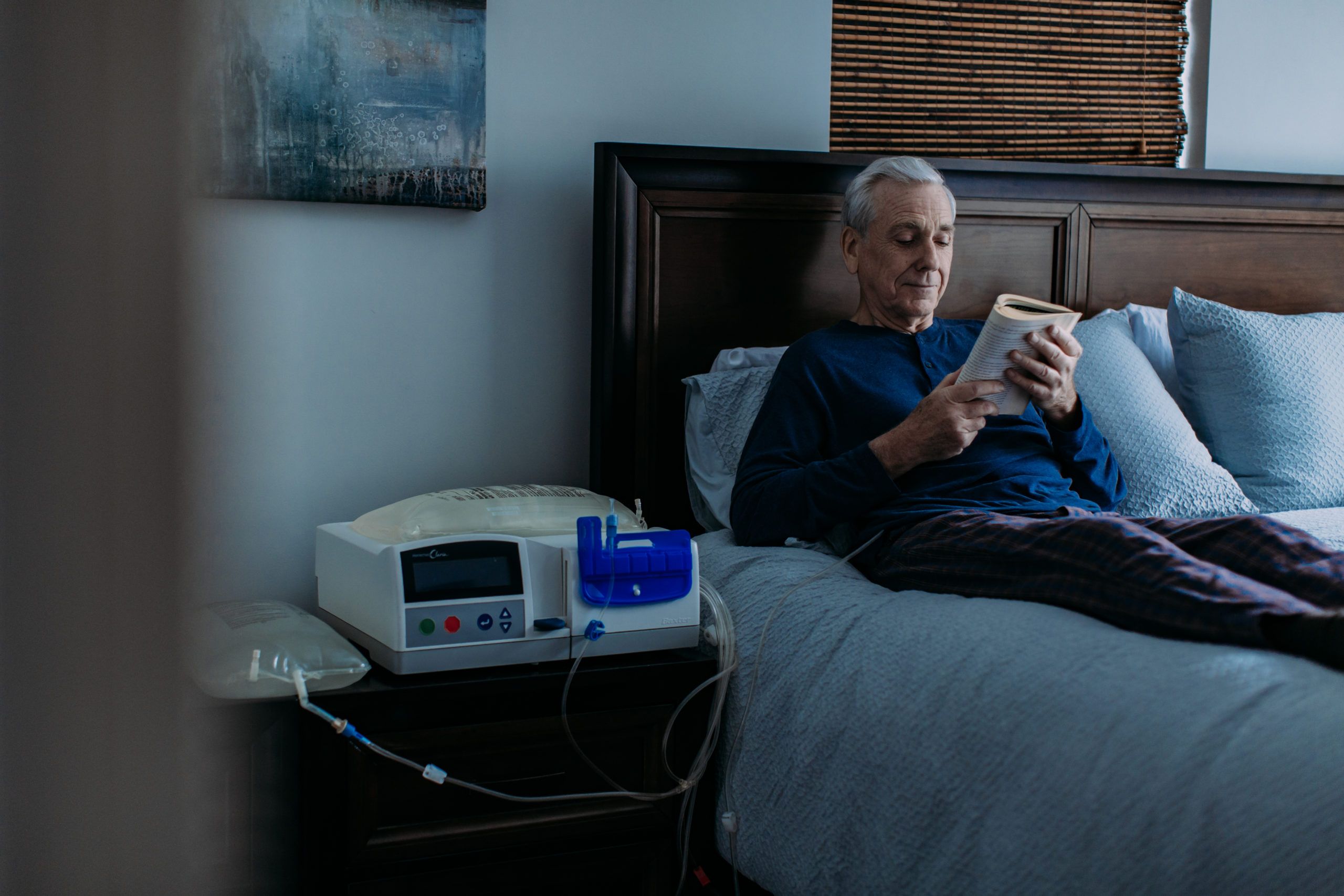
When it comes to spending more time at home, many would agree 2020 championed any other year in living memory. Being stuck at home can be limiting and isolating. However, innovation in dialysis technology has helped keep patients with kidney disease safe at home and connected with their clinicians during the pandemic.
While in-clinic dialysis requires patients to travel to hospitals and clinics three times a week for five-hour dialysis appointments, often limiting a person’s ability to work and quality of life, home dialysis can create more freedom for patients with chronic kidney disease. Around a million Australians are impacted by kidney disease each year.
Both Peritoneal Dialysis (PD) and Haemodialysis (HD) can be set up in the home. In fact, PD is specifically designed for home usage.
The majority of patients are able to access dialysis from their home. The earlier the diagnosis of kidney disease, the more time a patient has to assess the option that is most suited to their lifestyle through shared decision-making with their clinician.
Patients diagnosed with kidney disease early enough are able to access PD from their home. And the progress in this field doesn’t stop there. Today, PD patients can be remotely monitored and managed by their healthcare team thanks to cloud-based software.
Baxter Healthcare are a global leader in dialysis therapies and have been committed to transforming dialysis care for millions of patients around the world.
Sharesource is Baxter Healthcare’s cloud-based remote patient management technology for patients undergoing PD at home. Around 1,700 Australian and New Zealand patients are using Baxter’s PD therapy with Sharesource to manage their dialysis treatment.
Steven Flynn, General Manager at Baxter Healthcare Australia and New Zealand, said: “Sharesource software monitors the therapy remotely and clinicians can assess a patient’s treatment on a daily basis, instead of waiting for a monthly clinic visit. The healthcare team is also able to make proactive adjustments from the hospital or clinic, reducing the need for high-risk patients to visit hospitals during the COVID-19 pandemic.
Previously, if the patient noticed anything different in their therapy, they would have needed to visit a hospital or clinic for assessment taking a log or record of their treatment data for the clinician to view.
The remote patient management technology helps to reduce the frequency of hospital and clinic visits for the home PD patients. And it provides the clinician with greater and more frequent access to their patient’s data.
Monitoring patients closely on a daily basis rather than a monthly basis may also be helping to detect treatment related challenges early reducing the potential of complications, according to some of the early data we are seeing.”
PD can be administered overnight, which allows patients who would otherwise have to spend three days a week in hospital to work or study without interruption.
“You can do your therapy at night, and then go about your day,” said Mr Flynn.
There was an increase in the number of patients on Sharesource remote management technology in Australia during the COVID-19 pandemic.
Chris Forbes, CEO of Kidney Health Australia, said: “Kidney Health Australia actively promotes home-based therapies as a treatment option. There are certainly advantages to home-based therapies such as greater flexibility and improved quality of life. And we support initiatives that promote home-based therapies to the appropriate people and anything that makes home-based therapy safe and more user-friendly.
People who are on dialysis are a very immunosuppressed patient group and therefore have to be vigilant with infection control. And so COVID is a real risk to them.
Accessing a home-based therapy, and therefore not having to go into a hospital environment, not having to travel, being more comfortable and not potentially being exposed to COVID-19 can have real advantages for these patients.”
A study sponsored by Baxter Healthcare demonstrated potential savings to the healthcare system if the patients enrolled were on home dialysis with remote patient management. Over a 12-month period, an estimated AUD $324,488 could be saved for each 100 people using the technology with automated PD. Fortunately, there is no out-of-pocket cost for Australian patients who opt for PD, but public health systems and Government healthcare budgets could benefit from the reduced costs delivered by remote patient management technology.
In the future, Mr Flynn hopes that the cloud-based technology will act as a predictive tool to further enhance therapy:
“Baxter is continuing to develop its Sharesource technology to further support clinicians with predictive analytics. It is hoped that with increased data analytics, clinicians can intervene sooner and provide the best care possible for the patients.”